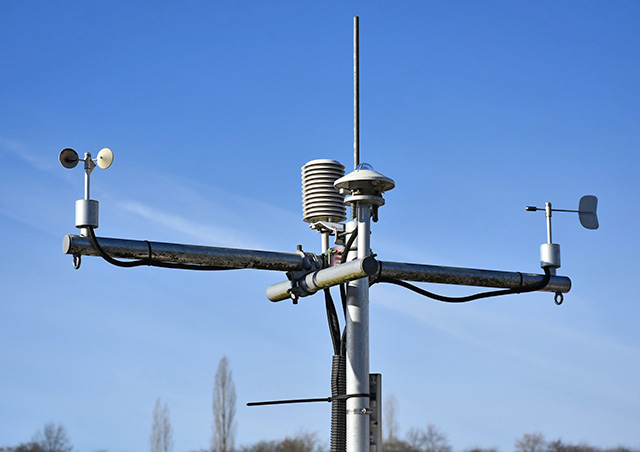When conducting fitness testing in the field, it is important to be aware of the effects of environmental and surface conditions and either reduce their effect (move indoors, change surface or direction), record and control for the conditions, or postpone testing. Here is a discussion about a few of the common environmental conditions that may affect fitness testing.
Air Temperature
Extreme hot or cold conditions can greatly affect field testing fitness test results. The (shade) air temperature, which is measured using a thermometer shielded from the sun is the standard temperature normally quoted in weather observations and forecasts. A mercury or electronic thermometer is required to accurately record the temperature. If it is very cold, a very good warm up is required for the muscles to perform to their potential (see warming up for fitness testing). In very hot conditions, give the athletes plenty of rest, water, and shade between tests. See also Humidity below.
Humidity
Humidity is also important for determining the effect of the heat on fitness test participants. Temperature itself does not always give an indication of the heat stress for the athletes - there is an index called the Wet Bulb Globe Temperature (WBGT), which is a composite temperature measure used to estimate the effect of temperature, humidity and solar radiation on humans. See more about WGBT. Humidity can be measured using some electronic devices. A more manual method is to use a wet-bulb temperature gage, which consists of a thermometer with its bulb covered with a wettened cotton wick supplied with distilled water from a reservoir. A table is used to calculate humidity by comparing the wet bulb temperature to the dry bulb temperature.
 weather station
weather station Wind
Wind can greatly affect the results from outdoor fitness testing. If indoor testing is not an option, then sprints and throwing tests should be conducted with a cross wind, though this is not always possible if you are using a pre-marked track. For tests that involve backwards and forwards running, or running around a track, then the net effect of the wind should be even, though it is generally more tiring running in windy conditions. Small hand held wind gages are available for measuring the wind speed. In track and field events, a tail wind of greater than 2.0 meters/second disallows all records. This is a good benchmark for determining if the fitness test has been greatly affected by the wind.
Barometric Pressure
The atmospheric pressure is important in the calculations for VO2, as the amount of oxygen in the air is affected by this value. As you increase in altitude, atmospheric pressure decreases. Not only will there be less oxygen in the air, the air will be thinner (reduced resistance) and gravity will be less - so sprinting and throwing tests may also be enhanced. If you are not able to measure barometric pressure directly, you may be able to get a reading from the local bureau of meteorology.
Other Effects
Testing outdoors also poses other problems, such as after or during rain making surfaces slippery. Some equipment may be adversely affected by the conditions, and may not work at very low or very high temperatures. Also be aware that moving some electronic devices between cool dry and warm damp places may cause condensation and damage equipment.
Related Pages
- Method for calculating WGBT
- Test Preparation Guidelines — get your body primed to perform to your physical potential.
- Pre-Test Procedures — list of jobs that need to be done prior to fitness testing.
- warming up for fitness testing


 Current Events
Current Events